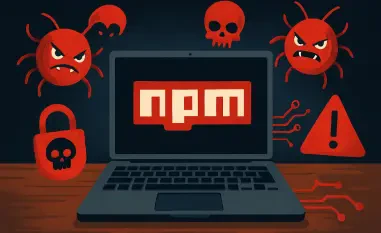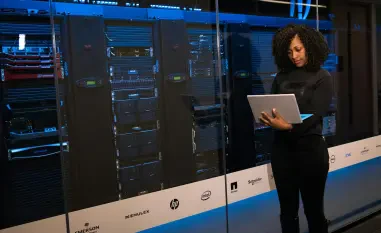In an era where digital security is paramount, a stark warning has emerged for millions of users still relying on an outdated operating system, leaving their devices perilously exposed to cyber threats. Cybersecurity experts have sounded the alarm, emphasizing the urgent need for Microsoft Windows 10 users to take immediate action to protect their systems from dangerous viruses and malware. With Microsoft officially ending support for Windows 10, the absence of automatic security updates has created a significant vulnerability gap. This development means that any newly discovered flaws in the system will remain unpatched, heightening the risk of exploitation by malicious actors. The call to action is clear: upgrading to a supported version of Windows or enrolling in extended security programs is no longer optional but a critical step to safeguard personal and sensitive data from potential attacks.
1. The End of Support for Windows 10
The termination of support for Windows 10 marks a pivotal moment for millions of users worldwide who must now confront the reality of an unprotected operating system. Microsoft has officially declared that Windows 10 has reached its end-of-life phase, meaning no further security patches or feature updates will be provided. This decision leaves systems open to newly emerging threats, as hackers often target unsupported software to exploit unaddressed vulnerabilities. According to cybersecurity professionals, the absence of updates significantly increases the likelihood of malware infections and data breaches. Users who continue to operate on this platform are essentially navigating a digital minefield, with no safety net to fall back on. The urgency to transition to a supported system cannot be overstated, as the risks grow with each passing day that the system remains unpatched and exposed to sophisticated cyber threats lurking in the online landscape.
Beyond the immediate risks, the end of support for Windows 10 also signals a broader shift in how technology companies manage legacy systems and user security over time. For those unable to upgrade due to hardware limitations or other constraints, the situation presents a complex challenge that requires careful consideration of available options. Cybersecurity experts stress that while the lack of updates is a primary concern, the cumulative effect of unaddressed vulnerabilities can lead to catastrophic consequences, including identity theft and financial loss. Microsoft has made it clear that continuing to use an unsupported version of Windows is a gamble that could result in severe repercussions. The focus now shifts to exploring alternatives, such as temporary security programs or investing in new hardware, to ensure that users are not left defenseless against the evolving tactics of cybercriminals who prey on outdated technology.
2. Upgrade Options and Security Alternatives
For Windows 10 users facing the end of support, upgrading to Windows 11 emerges as the most straightforward solution to maintain robust security and system functionality. This transition, however, depends on hardware compatibility, as not all devices meet the requirements for the latest operating system. Microsoft has advised users to verify their device specifications to determine eligibility for the upgrade, which promises enhanced security features and ongoing support. Cybersecurity specialists highlight that moving to Windows 11 closes the vulnerability gap left by Windows 10, ensuring protection against modern threats. The process typically involves checking for updates through the system settings and following guided installation steps. While this option offers a long-term fix, users must act promptly to avoid prolonged exposure to risks that could compromise personal data and system integrity in an increasingly hostile digital environment.
For those unable to upgrade to Windows 11 due to hardware limitations, Microsoft offers a temporary lifeline through the Extended Security Updates (ESU) program, providing critical security fixes for an additional period. Notably, the ESU program for Windows 10 home users is currently available at no cost for one year to individuals with a Microsoft account, extending protection until October 13, 2026. This initiative serves as a bridge for users to plan their next steps, whether that involves acquiring a compatible device or exploring other security measures. Experts recommend enrolling in this program as a stopgap measure to mitigate immediate risks while evaluating long-term solutions. Additionally, users of even older Windows versions, such as 7 or 8, face heightened dangers due to prolonged lack of support, underscoring the urgency of adopting supported software to prevent falling victim to cyber attacks that exploit outdated systems.
3. Planning for a Secure Digital Future
As the digital landscape continues to evolve, planning for a secure future becomes an essential responsibility for all Windows users navigating the aftermath of discontinued support for older systems. Beyond immediate upgrades or temporary security updates, considering the lifecycle of technology and staying ahead of potential threats is crucial. Microsoft encourages users to explore trade-in and recycling programs offered through various partners to facilitate the transition to Windows 11-compatible devices. These programs not only help offset the cost of new hardware but also promote responsible disposal of outdated technology. Staying informed about software support timelines and emerging cyber threats empowers users to make proactive decisions, ensuring that their systems remain fortified against attacks that could disrupt personal and professional lives in an interconnected world.
Reflecting on the steps taken by Microsoft to address the end of Windows 10 support, it becomes evident that the push for upgrades and extended security measures was a necessary response to a growing cyber threat landscape. The introduction of free access to the ESU program for a limited period provided a critical buffer for many users who faced barriers to immediate upgrades. Meanwhile, the emphasis on transitioning to Windows 11 highlighted the importance of aligning with modern security standards to combat sophisticated malware and hacking attempts. Moving forward, users are encouraged to prioritize regular system assessments and leverage available resources, such as trade-in initiatives, to maintain a secure digital environment. Staying vigilant and adopting supported technology emerge as key strategies to navigate future challenges and protect against the ever-present risks in the online realm.













